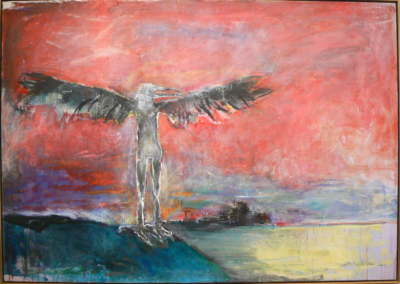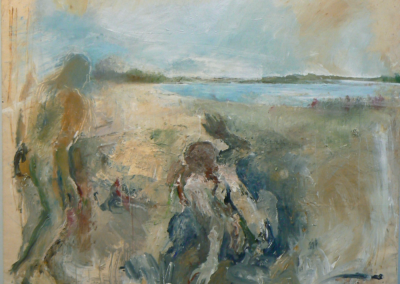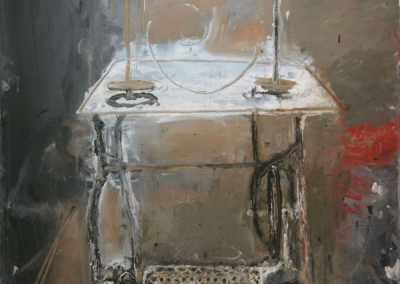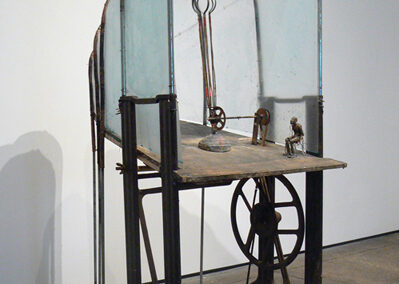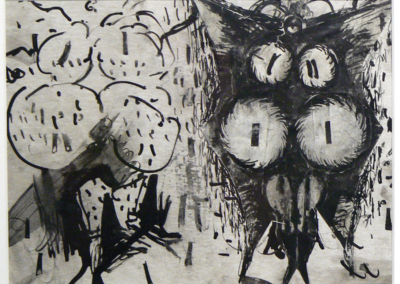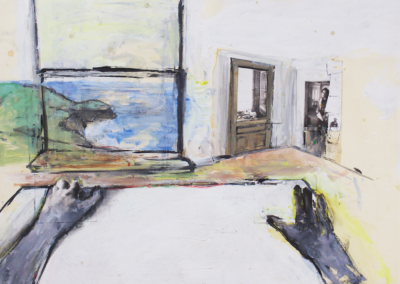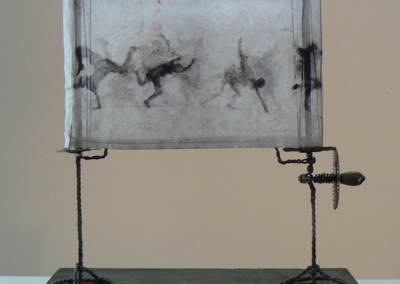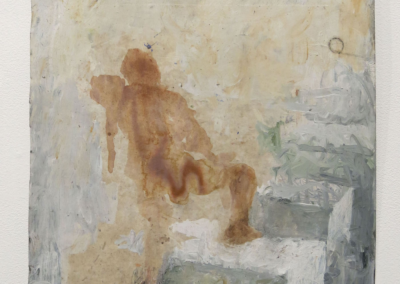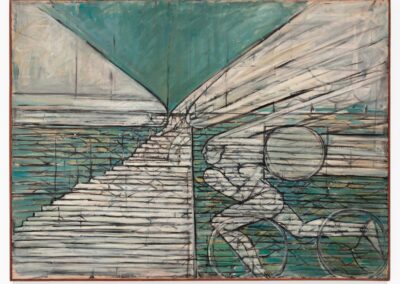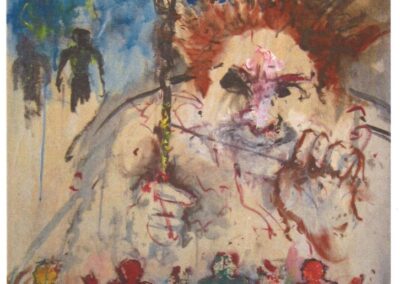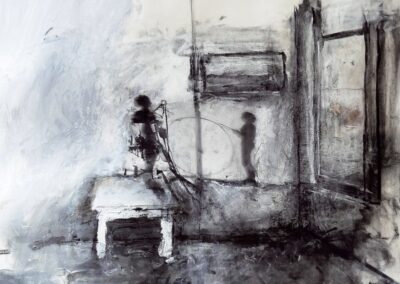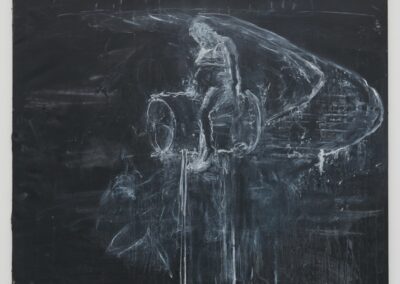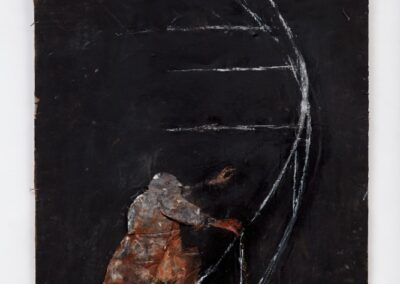Our next Artist You Need To Know is June Leaf.
June Leaf (born 1929) is an American artist best known for her abstract allegorical paintings and drawings as well as more modernist kinetic sculptures. She divides her time between New York City in the United States and Mabou, Nova Scotia.
From Ortuzar Projects : “In a career that spans over seven decades, June Leaf has developed a singular cosmology of characters and signs that exists fluidly across painting, drawing, assemblage and kinetic sculpture. Creating scenographies that resemble plays within plays, Leaf often incorporates representations of the artist in her studio, figures part animal or machine, and actors who make direct addresses to their viewers in an exploration of agency, the artistic process, and the human condition. Working from nature, personal experience, and art historical lineages, Leaf creates storylines that humorously probe at rationalistic impulses, representations of gender, and modern-day mythology.”
She was born in 1929 in Chicago, Illinois and briefly attended the Institute of Design (formerly known as the New Bauhaus, between 1947 and 1948 ) where she studied under Hugo Weber. Leaf would leave the school to travel to Paris in 1948, choosing to be more independent in working on her art. However, she’d return to the United States in 1954, earning a B.A. degree in Art Education from Roosevelt University and an M.A. degree in Art Education at the Institute of Design. She would then return to Paris (over the years of 1958 and 1959) with the support of a Fulbright Grant. Leaf would move to New York City in 1960.
Leaf had her first solo exhibition in 1948 at the Sam Bordelon Gallery in Chicago and later (in the 1960s and 1970s) she mounted exhibitions at the Allan Frumkin Gallery (New York and Chicago). A retrospective of her art took place at The Museum of Contemporary Art (Chicago) in 1978, and in 1991 a major exhibition of Leaf’s sculptural artworks and works on paper was organized by the Washington Project for the Arts (Washington, D.C.). Other significant solo shows have taken place at the Freedman Gallery, Albright College (in Reading, Pennsylvania), Mount Saint Vincent University Art Gallery (Halifax, Nova Scotia) and the Tinguely Museum (Basel, Switzerland).
She married filmmaker and photographer Robert Frank in 1971.
“I am a painter who had to have a tactile experience with the world. I had to go a circuitous route to get to what I am – a painter.”
In 2016, two major retrospectives of Leaf’s artwork were mounted : the Whitney Museum of American Art held the retrospective exhibition June Leaf: Thought Is Infinite and the Edward Thorp Gallery (New York City) presented June Leaf: A Survey, 1949 – Present.
June Leaf’s artwork can be found in many significant collections which including the Addison Gallery of American Art, Phillips Academy at Andover, MA; Art Institute of Chicago, IL; DePaul Art Museum, Chicago, IL; Madison Museum of Contemporary Art, WI; Minneapolis Institute of Art, MN; Museum of Contemporary Art, Chicago, IL; Museum of Modern Art, NY; Smithsonian American Art Museum, Washington D.C.; Tel Aviv Museum of Art, Israel; University of Southern Illinois at Carbondale, IL; Whitney Museum of American Art, NY; and Yale University Art Gallery, New Haven, CT.
Both DePaul University in Chicago (1984) and the Nova Scotia College of Art and Design (NSCAD, 1996) have awarded Leaf Honorary Doctorates. She has received numerous awards including from the Canadian Council and the National Endowment for the Arts (NEA).
From Meer : “Leaf’s works are stages filled with dramatic action. Her sculpture continues to reflect her investment in all things mechanical, producing her characteristic exploration of movement. This fluency also occurs in the paintings, as figures animate the surface, capturing activity with a remarkable lyrical freedom.
Continuing to explore the fundamental worlds that she has created over the course of more than six decades, Leaf has been able to conjure works that probe essential questions about humanity, not shying away from quintessential themes such as equality and labor, mortality and redemption. With a focus on both earthly and transcendent humanist themes, her narrative symbolism reveals the essentials of the human condition. She applies her remarkable skills to create haunting imagery with an emotional edge and poignancy that never veers into nostalgia or obviousness.”
More about June Leaf’s life can be seen here, and more of her works can be enjoyed here.




